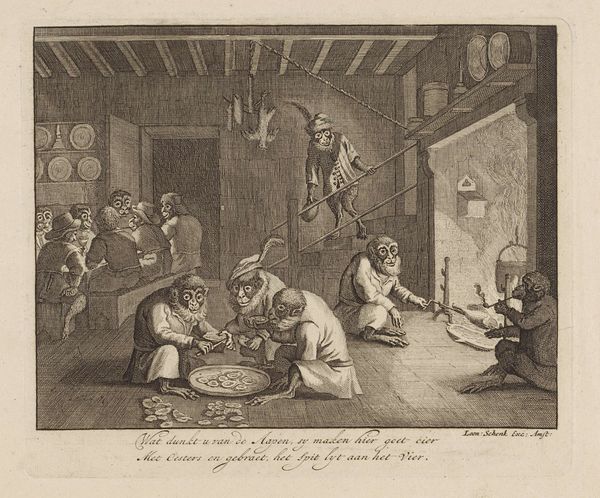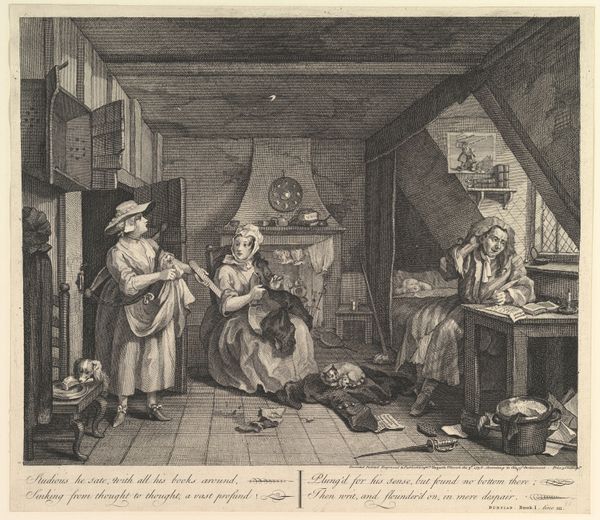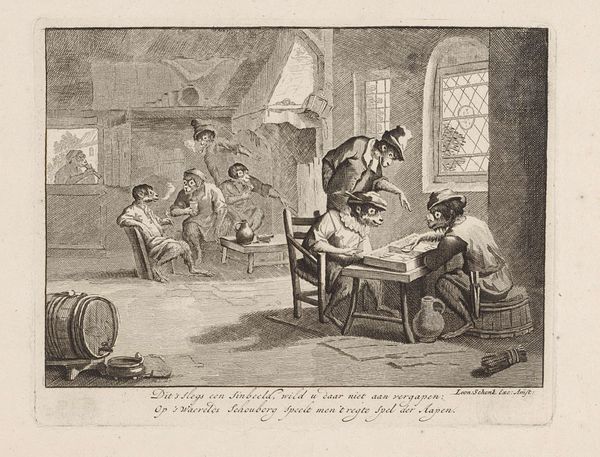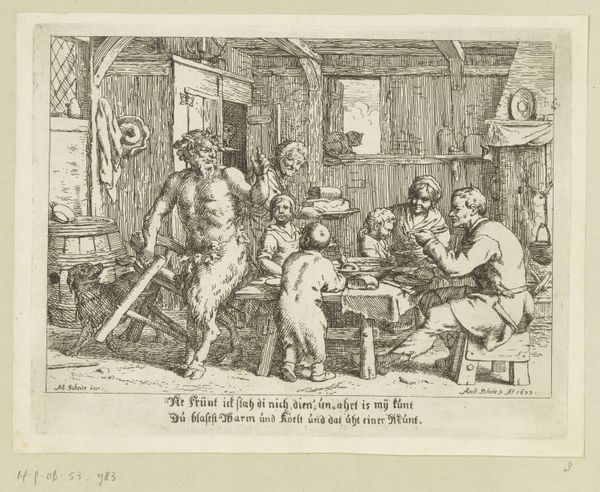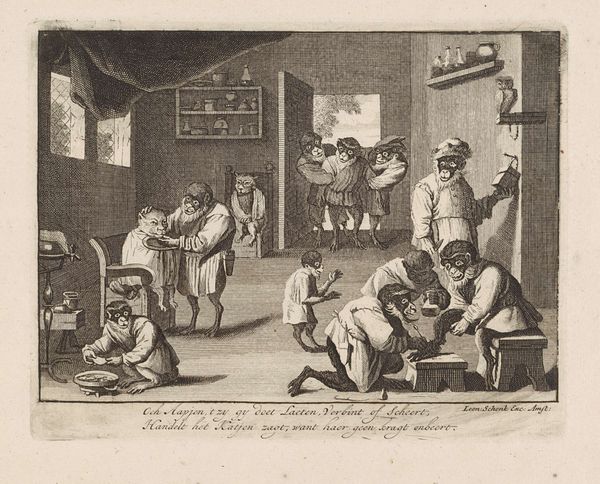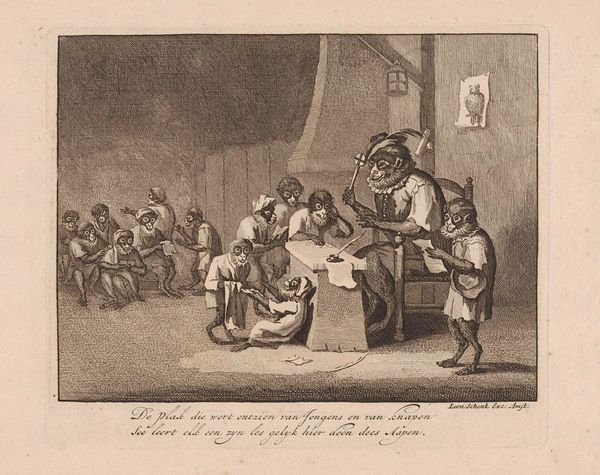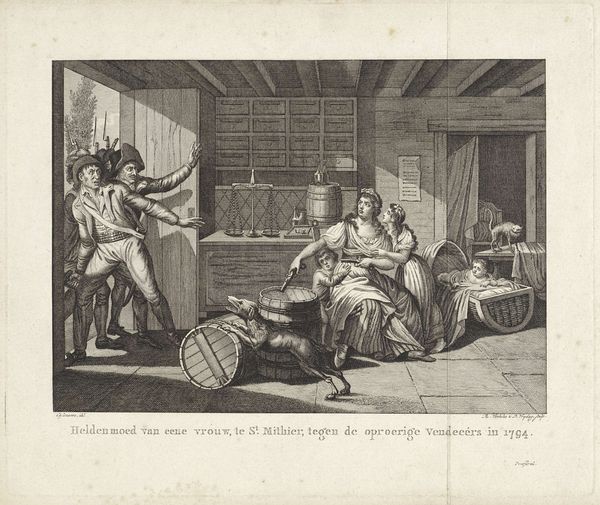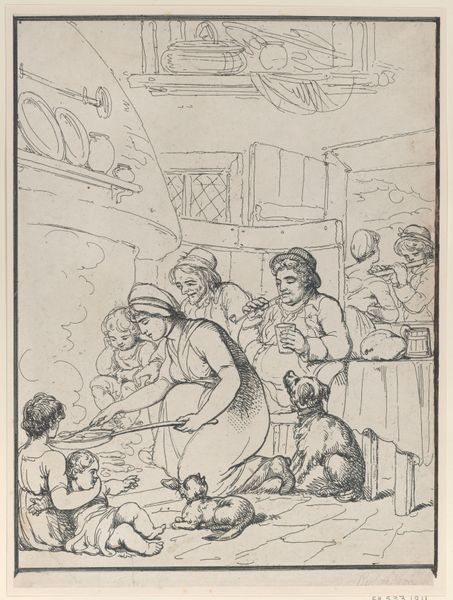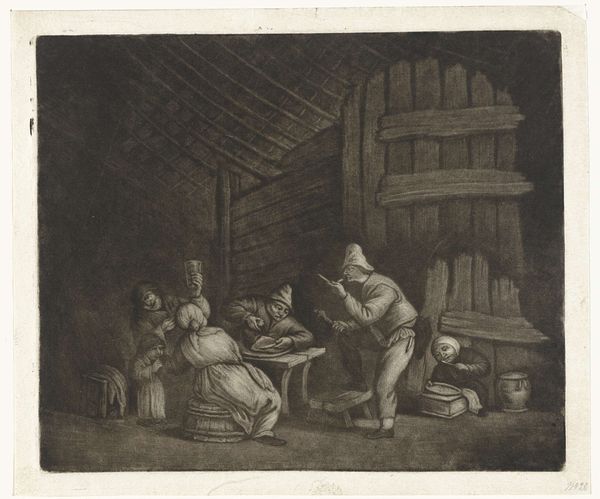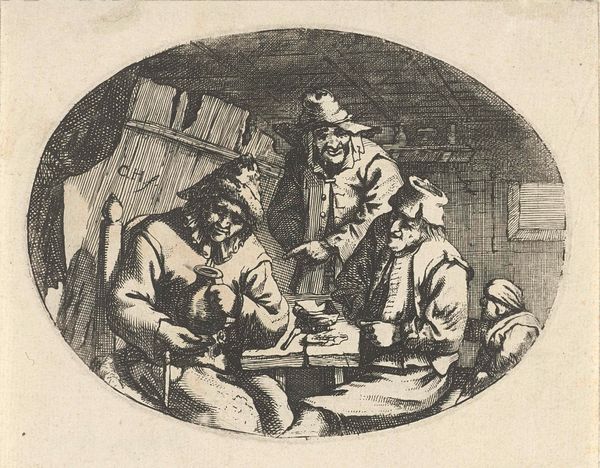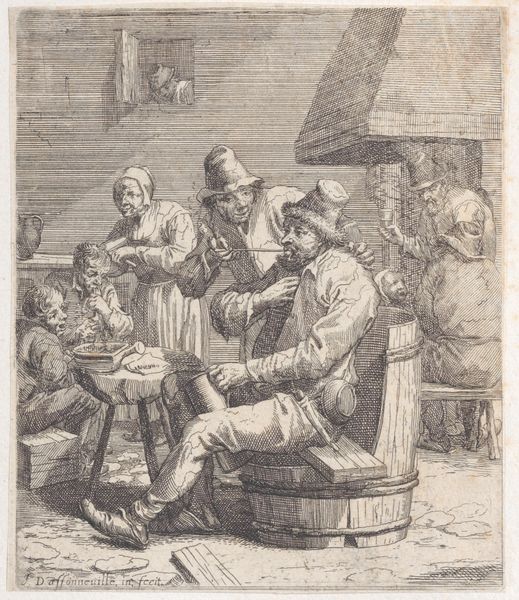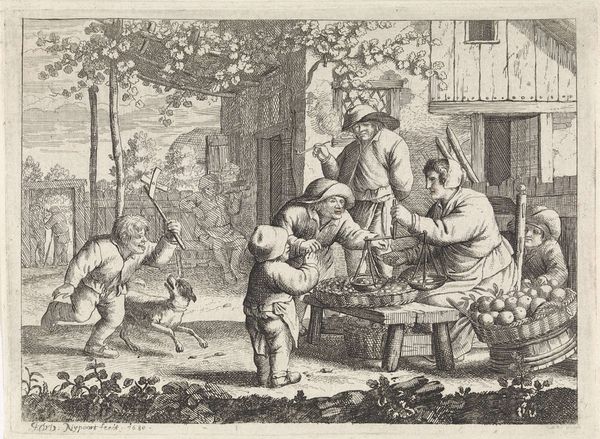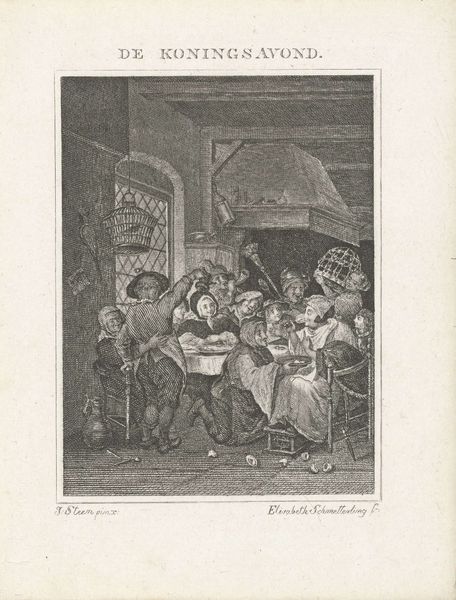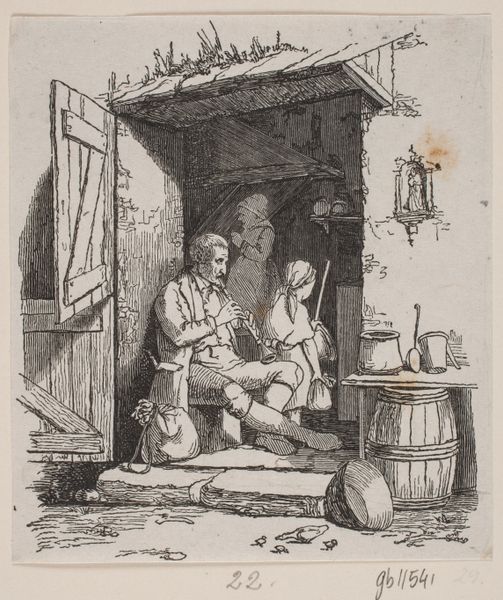
Dimensions: image: 19.8 Ã 27.2 cm (7 13/16 Ã 10 11/16 in.) sheet: 21.6 Ã 27.9 cm (8 1/2 Ã 11 in.)
Copyright: CC0 1.0
Curator: Ah, here we have Thomas Rowlandson’s etching, “The Double Disaster or New Cure for Love.” Created around 1807, it’s a wonderfully chaotic scene rendered with incredible detail. Editor: My first thought is, what a frenzy! It feels like a dark satire about misguided attempts to control matters of the heart. Curator: Precisely. The imagery of a witch figure stirring a cauldron while a young man emerges from a large vessel suggests alchemical transformations gone awry. It’s about the dangers of meddling. Editor: Right. And consider the social context—the rise of scientific rationalism clashing with older folk traditions. It also looks like a commentary on class. The woman with the hammer looks like a rich housewife and the witch a poor crone. Curator: Absolutely. Rowlandson uses caricature to reveal social anxieties and prejudices. The witch, a recurring figure in folklore, represents a perceived threat to social order and morality. Editor: In that case, the "disaster" might be a larger commentary on social upheaval or gender roles at a time of dramatic cultural shifts. Curator: Perhaps. It’s a reminder that visual symbols can be loaded with cultural memory, triggering strong emotional responses. Editor: Ultimately, Rowlandson’s piece still raises questions about the human impulse to intervene in matters that are perhaps best left to chance or individual agency.
Comments
No comments
Be the first to comment and join the conversation on the ultimate creative platform.
